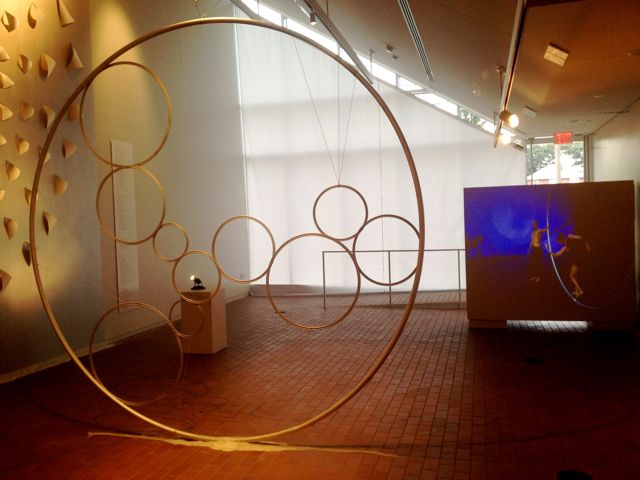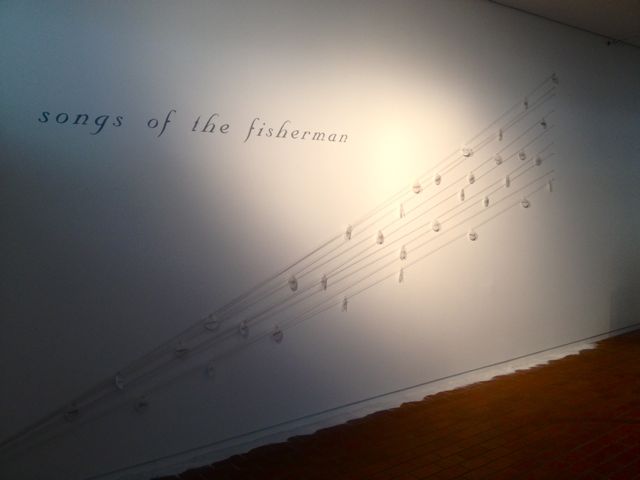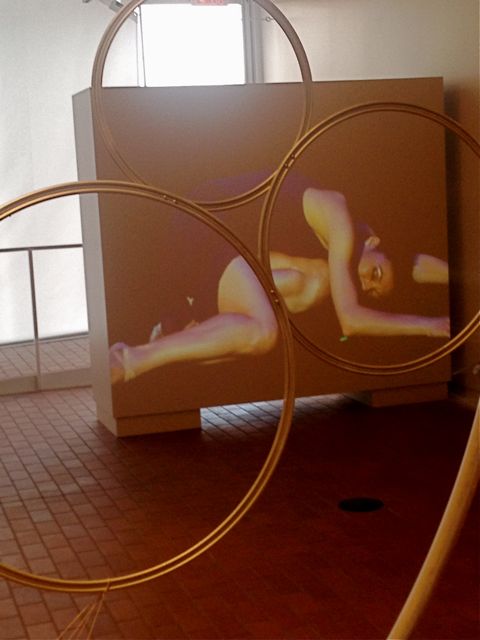
“Songs of the Fisherman” at UNC Charlotte: performance or installation?
“The moon is very close tonight. Threads once held it to the Sky, but they have come undone.
The moon is falling, but if I raise my hand, I can catch it on my finger, Before the branches snatch it away.
Quick tell me, what is it made of. I can tell by the feel between my fingers, By its taste beneath my tongue.
These are things one can learn only at night. The moon is in everything, Everything is in the moon.”
-Andrew Albin So starts the “Songs of the Fisherman,” a chamber opera turned art installation at the Projective Eye Gallery. The exhibit is a fusion of installation and performance art, taking inspiration from the “Songs of the Fisherman” and its performance in January 2012 to combine visual art, music and dance in the same space. As a collaborative experiment between Brian Arreola, Gretchen Alterowitz, Anita Tripathi Easterling and Mira Frisch, the exhibit attempts to bridge these distinct disciplines and involve the visitor experientially.
The “Songs of the Fisherman” will be on display until August 6, 2012 at the University of North Carolina at Charlotte’s Center City location as part of the new annual Summer Experiment, which is an exhibition dedicated to collaboration and experimentation by UNC Charlotte faculty. The Projective Eye Gallery opened in September of 2011 and is curated by Director of Galleries, Crista Cammaroto. The gallery will feature inter-disciplinary exhibitions and events.
With words by Andrew Albin and music by Timothy Nelson, the “Songs of the Fisherman” is an exploration of the journey of life, emphasizing oppositional themes of alienation and inter-connectedness, permanence and impermanence, and struggle and acceptance. It shows the clear influence of Homer’s “Odyssey” and the creation story in “Genesis.”
The installation seems to distill the Opera’s themes, focusing on the circular movement of time and our inter-connectedness. Sculptures by Easterling convey this circular motion with a large flat hoop in the center of the room enclosing smaller hoops, and on one wall a gigantic spiral made from paper curls its way to a central point. Labels on either side of the spiral transcribe the words from the “Songs of the Fisherman” and help the viewer relate to the art works. Across from the spiral a burst of strings radiate from a central point, suggestive not only of a fisherman’s line but also a staff in musical notation. A silver-and-white color scheme predominates the space, creating the feel of a lunar landscape.
Anita Tripathi Easterling sculpture in “Songs of the Fisherman” at the Projective Eye Gallery.
A video of the opera performance loops repeatedly on a large rectangular block towards the wall farthest from the entrance and is also projected on the wall near the door. The opera is performed by Brian Arreola, a magical tenor whose voice penetrates the space, and Alison Mixon whose dancing is precise and intense. The music vividly conveys the tension of the Opera’s themes through its dis-harmony and sudden staccato bursts. It is haunting at times and then melodic. Mixon’s dancing serves to amplify the music and tenor.
Without the video the installation would lose much of its potency, but it is problematic too. The video distracts from the other art works by paralyzing the viewer in one spot as they watch it, which takes about 30 minutes to play through its entirety. However, when viewed through the lens of the central hoops by Easterling, the video re-connects to the installation as a whole. And we begin to experience the video and set as an installation.
Anita Tripathi Easterling hoop sculpture and the “Songs of the Fisherman” performance video in “Songs of the Fisherman” at the Projective Eye Gallery.
The Projective Eye Gallery at UNC Charlotte Center City Building: 320 E. 9th St., Charlotte. Open Mon.-Sun., 9 a.m.- 9 p.m.
Recent Content
-
Artsarticle ·
-
Artsarticle ·
-
Artsarticle ·



